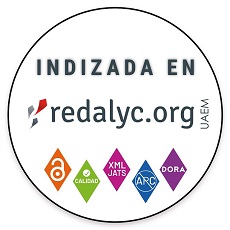Analysis of the Intentionality and usability of business intelligence in the context of Industry 5.0 and its impact on Colombian international trade
Análisis de la Intencionalidad y usabilidad de la inteligencia de negocios en el contexto de la Industria 5.0 y su impacto en el comercio internacional Colombiano
DOI:
https://doi.org/10.15446/dyna.v92n235.117383Palabras clave:
Industry 5.0, online platforms, educational quality, technological infrastructure, local development (en)Industria 5.0, plataformas en línea, calidad educativa, infraestructura tecnológica, desarrollo local (es)
Descargas
In Colombia, integrating educational technology (EdTech) is crucial for enhancing educational quality and efficiency, especially in the post-pandemic context. Researchers [1] highlight the significant role of online platforms, yet challenges persist, such as the need for robust technological infrastructure and comprehensive teacher training. With 55.3% of universities adopting these platforms, reliance on external technologies and insufficient investment in local EdTech hinder innovation, as noted by [2]. [3] advocate for investing in local EdTech to improve education and stimulate economic development. In the industrial sector, under Industry 5.0, Business Intelligence (BI) is vital for boosting international trade through data analysis and informed decision-making. [4] emphasizes tools like Power BI for competitiveness, while DANE data indicates that 40.1% of companies outsource technology management, highlighting the need to develop local expertise to ensure sustainable growth and align BI with national economic goals.
En Colombia, la integración de la tecnología educativa (EdTech) es crucial para mejorar la calidad y eficiencia educativa, especialmente en el contexto postpandemia. Los investigadores [1] destacan el papel significativo de las plataformas en línea; sin embargo, persisten desafíos como la necesidad de una infraestructura tecnológica robusta y una capacitación docente integral. Con un 55.3% de universidades que adoptan estas plataformas, la dependencia de tecnologías externas y la insuficiente inversión en EdTech local obstaculizan la innovación, como señalan [2]. [3] abogan por invertir en EdTech local para mejorar la educación y estimular el desarrollo económico. En el sector industrial, bajo la Industria 5.0, la Inteligencia de Negocios (BI) es vital para impulsar el comercio internacional a través del análisis de datos y la toma de decisiones informada. [4] enfatiza herramientas como Power BI para la competitividad, mientras que los datos del DANE indican que el 40.1% de las empresas subcontratan la gestión tecnológica, destacando la necesidad de desarrollar experiencia local para asegurar un crecimiento sostenible y alinear la BI con los objetivos económicos nacionales.
Referencias
[1] Pérez, F., and Martínez, L., Technology and pedagogy in higher education. Educational Innovation Publishing, 2022.
[2] López, A., and Ramírez, S., Technological dependency in Colombian universities. Higher Education Journal, 28(3), pp. 45-60, 2021.
[3] Castro, M., and Hernández, A., Investments in local educational technologies and their economic impacts. Educational Technology Review, 33(4), pp. 211-225, 2023.
[4] Martínez, L., Innovations in artificial intelligence and its application in modern industry. Advanced Technology Publishing, 2019.
[5] Díaz, P., and Rodríguez, M., The Industry 5.0 revolution: integration of AI in industrial processes. Journal of Industrial Engineering, 27(4), pp. 205-218, 2021.
[6] Becerra, J., and Contreras, R., Digital transformation and its impact on international trade. Journal of Commerce and Technology, 34(2), pp. 112-130, 2020.
[7] García, E., and Torres, A., Implementation strategies of BI in emerging economies. Business Management Journal, 19(3), pp. 89-105, 2022.
[8] Sarker, S., Business intelligence in the era of Industry 5.0: opportunities and challenges. Journal of Information Systems, 35(2), pp. 112-130. 2021.
[9] DANE. Survey on Information and Communication Technologies in Companies (ENTIC Companies). [online]. 2020. Retrieved from: https://www.dane.gov.co/index.php/estadisticas-por-tema/tecnologia-e-innovacion/tecnologias-de-la-informacion-y-las-comunicaciones-tic/encuesta-de-tecnologias-de-la-informacion-y-las-comunicaciones-en-empresas-entic-empresas#:~:text=Seg%C3%BAn%20el%20gr%C3%A1fico%201%2C%20en,%25%20y%2033%2C8%25
[10] Zhang, J., Zhao, X., and Wu, Y., The role of internal technology development in emerging markets: a focus on business intelligence. Technology Management Review, 12(3), pp. 88-104, 2021.
[11] Manavalan, E., and Jayakrishna, K., A review of Internet of Things (IoT) embedded sustainable supply chain for Industry 4.0 requirements. Computers & Industrial Engineering, 127, pp. 925-953, 2019. DOI: https://doi.org/10.1016/j.cie.2018.11.030
[12] Ngai, E.W.T., Hu, Y., Wong, Y.H., Chen, Y., and Sun, X., The application of data mining techniques in financial fraud detection: a classification framework and an academic review of literature. Decision Support Systems, 50(3), pp. 559-569, 2011. DOI: https://doi.org/10.1016/j.dss.2010.08.006
[13] Filigrana-Loboa, M.E., Gallego, J.A., and Mendoza, Á.D.J., Adoption of advanced technologies in the Colombian manufacturing industry. Technology and Management Journal, 14(2), pp. 45-60, 2022.
[14] Wang, G., Gunasekaran, A., Ngai, E.W.T., and Papadopoulos, T., Big Data analytics for business and industry: a review of the literature and a research agenda. International Journal of Production Economics, 182, pp. 141-162, 2016. DOI: https://doi.org/10.1016/j.ijpe.2016.08.018
[15] Tipan, A.V.T., and Garzon, C.M.V., Industry 5.0, review of the past and future of production and industry. Ciencia Latina Multidisciplinary Scientific Journal, 7(1), pp. 1059-1070, 2023. DOI: https://doi.org/10.37811/cl_rcm.v7i1.4457
[16] Chen, J., Zhang, M., and Li, Y., Advanced business intelligence tools and applications. Journal of Data Analytics, 45(2), pp. 145-162, 2020.
[17] Zhang, W., Zuo, N., He, W., Li, S., and Yu, L., Factors influencing the use of artificial intelligence in government: evidence from China. Technology in Society, 66, art. 101675, 2021. DOI: https://doi.org/10.1016/j.techsoc.2021.101675
[18] Smith, R., and Johnson, L., Local technology development policies for emerging markets: a strategic approach. Global Business Review, 24(2), pp. 197-215, 2022.
[19] González, A., Martínez, M., and Torres, P., Strategies for the implementation of BI in emerging economies. Business Technology Journal, 18(4), pp. 123-139, 2022.
[20] Sierra-Ojeda, J.B., Design of an improvement proposal for the processing, analysis, and presentation of information in Cemex Colombia's aggregates trading area using Power BI Software. [online]. 2019. Retrieved from: https://hdl.handle.net/11349/22700
[21] Arévalo, J.A., Strategy to increase the use of Power-Bi in the company command Alkon Colombia SAS. Sp. Thesis, EAN University, Bogotá, Colombia, [online]. 2023. Retrieved from: https://hdl.handle.net/10882/12738
[22] Salazar-González, G.A., Logistics and supply chains in food companies: a focus on the use of BI. Journal of Supply Chain Management, 16(2), pp. 88-101, 2023. DOI: https://doi.org/10.1016/j.jscm.2023.02.005
[23] Kannan, D., Khodaverdi, R., Olfat, L., Jafarian, A., and Diabat, A., Integrated Fuzzy Multi-Criteria Decision-Making method and multi-objective programming approach for supplier selection and order allocation in a green supply chain. Journal of Cleaner Production, 47, pp. 355-367, 2013. DOI: https://doi.org/10.1016/j.jclepro.2013.02.010
[24] Báez-López, J., Implementation of Microsoft Power BI tool for data analysis in the imports area as an improvement plan in organizational processes. Thesis, Santo Tomás University, Bogotá, Colombia, 2023.
[25] Sarker, I.H., Machine Learning: algorithms, real-world applications, and research directions. SN COMPUT. SCI. 2, 160, 2021. DOI: https://doi.org/10.1007/s42979-021-00592-x
[26] Pappas, I., Patelis, T., and Papadopoulos, T., The role of business intelligence in the digital age. Business Strategy Review, 30(3), pp. 78-94, 2021.
[27] Chen, X., Zhang, D., and Liu, H., Internal technology development and competitive advantage in emerging markets. Journal of Business Research, 110, pp. 352-367, 2020.
[28] Khan, S., Ali, M., and Shah, M., Integration of emerging technologies in international trade. International Trade Journal, 37(4), pp. 201-220, 2022.
[29] Yang, X., and Xu, W., Business intelligence strategies for global market competitiveness. Global Business Review, 24(5), pp. 112-127, 2021.
[30] Lee, J., and Lee, S., The role of artificial intelligence in enhancing competitive advantage. Technology and Innovation Management Review, 12(5), pp. 25-37, 2022.
[31] Anderson, P., Lee, H., and Chen, Y., Global trends in business intelligence and data analytics. Journal of International Business Studies, 53(3), pp. 405-421, 2022.
[32] González, A., Ramírez, J., and López, P., Optimization techniques in linear programming for emerging economies. Operations Research Review, 28(1), pp. 33-49, 2022
[33] DANE. Trade Balance - DANE. [online]. 2023. Retrieved from: https://www.dane.gov.co/index.php/estadisticas-por-tema/comercio-internacional/balanza-comercial
Cómo citar
IEEE
ACM
ACS
APA
ABNT
Chicago
Harvard
MLA
Turabian
Vancouver
Descargar cita
Licencia
Derechos de autor 2025 DYNA

Esta obra está bajo una licencia internacional Creative Commons Atribución-NoComercial-SinDerivadas 4.0.
El autor o autores de un artículo aceptado para publicación en cualquiera de las revistas editadas por la facultad de Minas cederán la totalidad de los derechos patrimoniales a la Universidad Nacional de Colombia de manera gratuita, dentro de los cuáles se incluyen: el derecho a editar, publicar, reproducir y distribuir tanto en medios impresos como digitales, además de incluir en artículo en índices internacionales y/o bases de datos, de igual manera, se faculta a la editorial para utilizar las imágenes, tablas y/o cualquier material gráfico presentado en el artículo para el diseño de carátulas o posters de la misma revista.

















